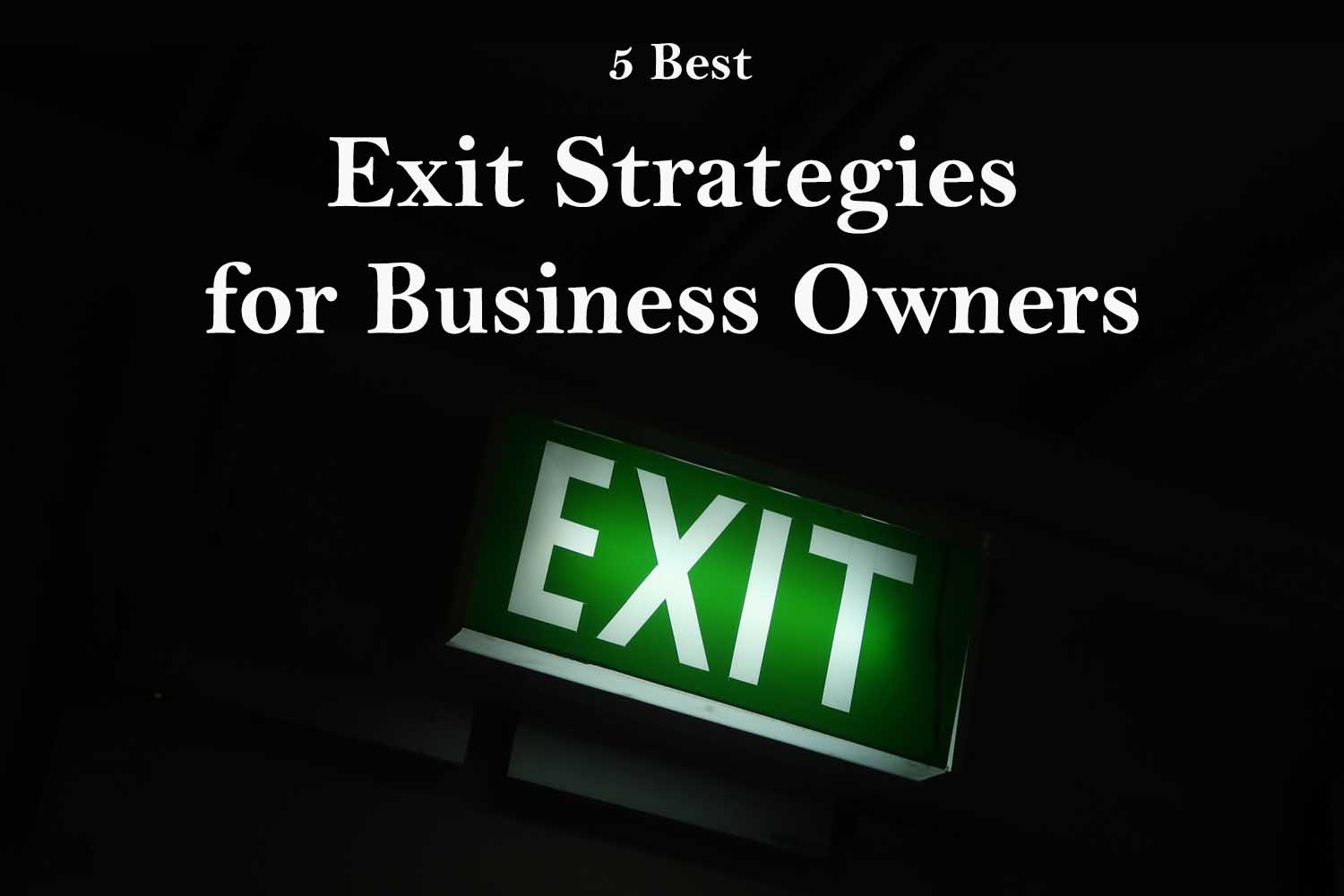As a business owner, you’ve put in countless hours of hard work to build and grow your business.
However, there may come a time when you decide to move on to other endeavors or retire.
When that time comes, it’s important to have a solid exit strategy in place to ensure a smooth transition and maximize the value of your business.
Let’s take a look at the best exit strategies for small and medium-sized businesses.
Why Exit Strategies Are Important
Having a well-thought-out exit strategy is essential for several reasons:
- Maximizing value: An exit strategy can help you maximize the value of your business by positioning it for sale or transfer in a way that is attractive to potential buyers or successors.
- Protecting your legacy: Your business is a reflection of your hard work and dedication. A solid exit strategy can help ensure that your legacy is preserved and that your business continues to thrive after you leave.
- Reducing risk: Without an exit strategy, you may find yourself stuck in your business, unable to retire or move on to other opportunities. This can be risky, as it leaves you vulnerable to market downturns or other unforeseen events.
The Best Exit Strategies
There are several exit strategies to consider, depending on your goals and the nature of your business.
Here are some of the most popular options:
1. Sell Your Business
Selling your business is one of the most common exit strategies for small and medium-sized businesses.
This option involves finding a buyer who is willing to purchase your business for a price that reflects its value.
When selling your business, there are several factors to consider, including:
- Timing: You’ll want to time your sale to maximize the value of your business. This may involve waiting until your business has reached a certain level of growth or profitability.
- Valuation: You’ll need to determine the value of your business before putting it on the market. This will involve taking into account factors such as your revenue, assets, and market position.
- Marketing: You’ll need to market your business to potential buyers. This may involve creating a sales memorandum, advertising in industry publications, or working with a business broker.
2. Transfer Your Business to Family Members
If you have family members who are interested in taking over your business, transferring ownership to them can be a good option.
This can be a great way to preserve your legacy and ensure that your business remains in the family.
When transferring your business to family members, there are several factors to consider, including:
- Training and education: Your family members may need training and education to take over your business successfully. This may involve providing them with mentorship, training programs, or outside consulting services.
- Succession planning: You’ll need to develop a succession plan that outlines how ownership and management will be transferred to your family members.
- Legal considerations: You’ll need to work with a lawyer to draft the necessary legal documents, such as a buy-sell agreement or a family limited partnership agreement.
3. Employee Stock Ownership Plan (ESOP)
An Employee Stock Ownership Plan (ESOP) is a retirement plan that allows employees to become owners of the company.
This option can be a good way to incentivize and reward employees while also providing a smooth exit for the owner.
When setting up an ESOP, there are several factors to consider, including:
- Valuation: You’ll need to determine the value of your business before setting up an ESOP. This will involve taking into account factors such as your revenue, assets, and market position.
- Funding: You’ll need to fund the ESOP, either by borrowing money or by selling shares of your business to the ESOP trust.
- Employee education: You’ll need to educate your employees about the ESOP and how it works. This may involve providing training sessions, workshops, or other resources.
4. Management Buyout (MBO)
A Management Buyout (MBO) is an exit strategy that involves selling the business to its current management team.
This option can be a good way to ensure that your business continues to be managed by people who understand it well.
When considering an MBO, there are several factors to consider, including:
- Management team: You’ll need to have a strong and capable management team in place to execute the buyout successfully.
- Financing: You’ll need to secure financing to fund the buyout, either through a loan or by selling shares of the business to the management team.
- Valuation: You’ll need to determine the value of your business before entering into an MBO. This will involve taking into account factors such as your revenue, assets, and market position.
5. Liquidation
If none of the above options are feasible, liquidation may be the only option.
This involves selling off all of your assets and closing down your business.
While this may not be the ideal outcome, it can be a better option than letting your business fail.
When considering liquidation, there are several factors to consider, including:
- Timing: You’ll need to time your liquidation to maximize the value of your assets.
- Legal considerations: You’ll need to comply with all applicable laws and regulations when liquidating your business.
- Debt obligations: You’ll need to pay off any outstanding debts and liabilities before liquidating your business.
Here are some real-life examples of businesses that have used different exit strategies:
- Facebook’s IPO: In 2012, Facebook went public through an Initial Public Offering (IPO), which allowed the company’s early investors and founders to sell their shares to the public and realize their investment returns. This exit strategy allowed Facebook’s early investors to cash out and allowed the company to access additional capital for growth and expansion.
- WhatsApp’s Acquisition: In 2014, Facebook acquired WhatsApp, a popular messaging app, for $19 billion. WhatsApp’s founders and early investors sold their shares to Facebook, allowing them to exit the company and realize their returns. This exit strategy allowed WhatsApp’s founders to cash out while still ensuring the continued growth and success of their product under Facebook’s ownership.
- Starbucks’ Franchising: Starbucks, the global coffee chain, has used franchising as an exit strategy to expand its brand and reach. Franchising allowed Starbucks to open new locations without the need for significant capital investment, while also allowing the company to exit certain markets by selling the franchises to local owners. This exit strategy allowed Starbucks to scale rapidly while minimizing its risk and exposure in new markets.
- Sale to Competitor: In 2018, grocery chain Whole Foods was acquired by Amazon for $13.7 billion. This exit strategy allowed Whole Foods’ founders and early investors to sell their shares and exit the company, while also providing Amazon with a new channel for growth and expansion in the grocery industry.
- ESOP Buyout: In 2019, Stroh Precision Die Casting, a manufacturing company, sold its business to its employees through an Employee Stock Ownership Plan (ESOP) buyout. This exit strategy allowed the company’s owners to sell their shares to the employees while also ensuring the continued success and longevity of the company under employee ownership.
In conclusion, having a solid exit strategy in place is essential for any business owner.
By considering the options outlined above, you can find the best exit strategy for your business and ensure a smooth transition that maximizes the value of your business and protects your legacy.
Remember to seek advice from professionals, such as lawyers, accountants, and business brokers, when developing your exit strategy.
With careful planning and execution, you can exit your business on your own terms and set yourself up for success in your next endeavor.







